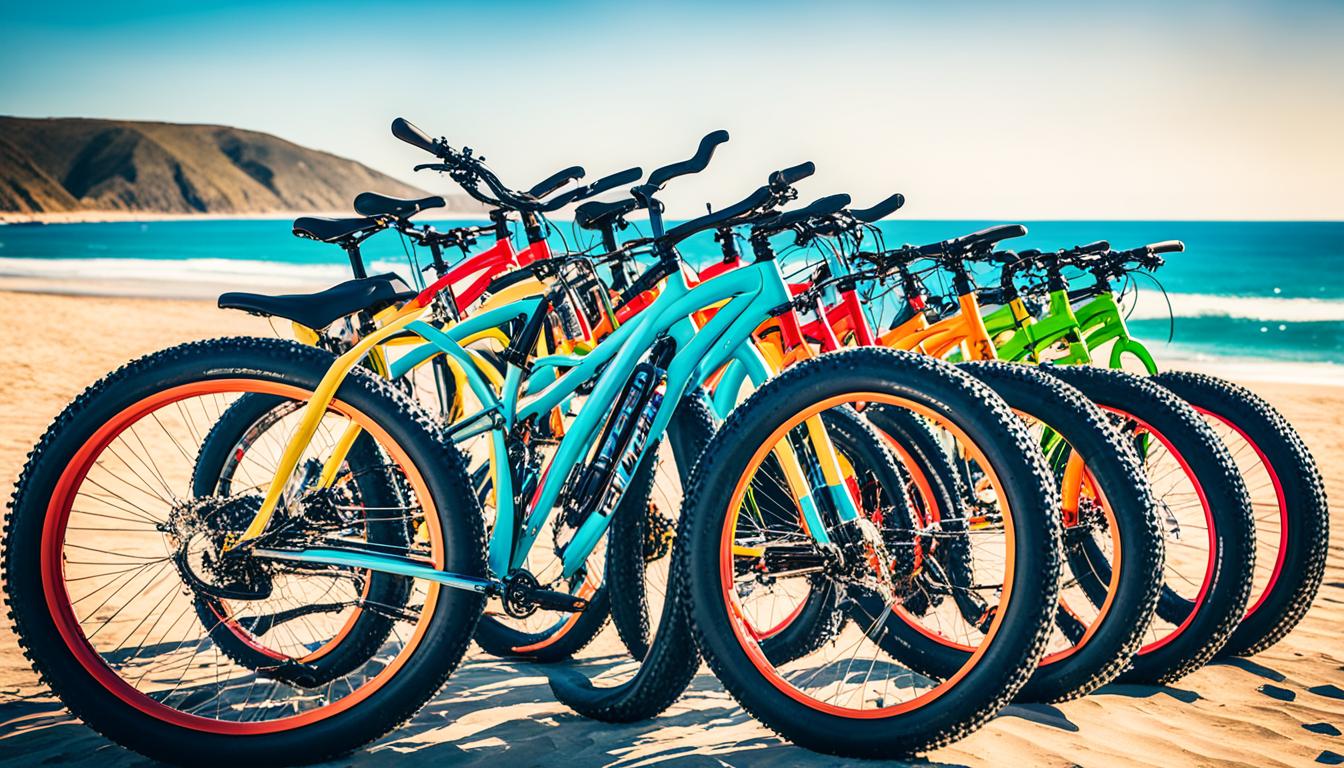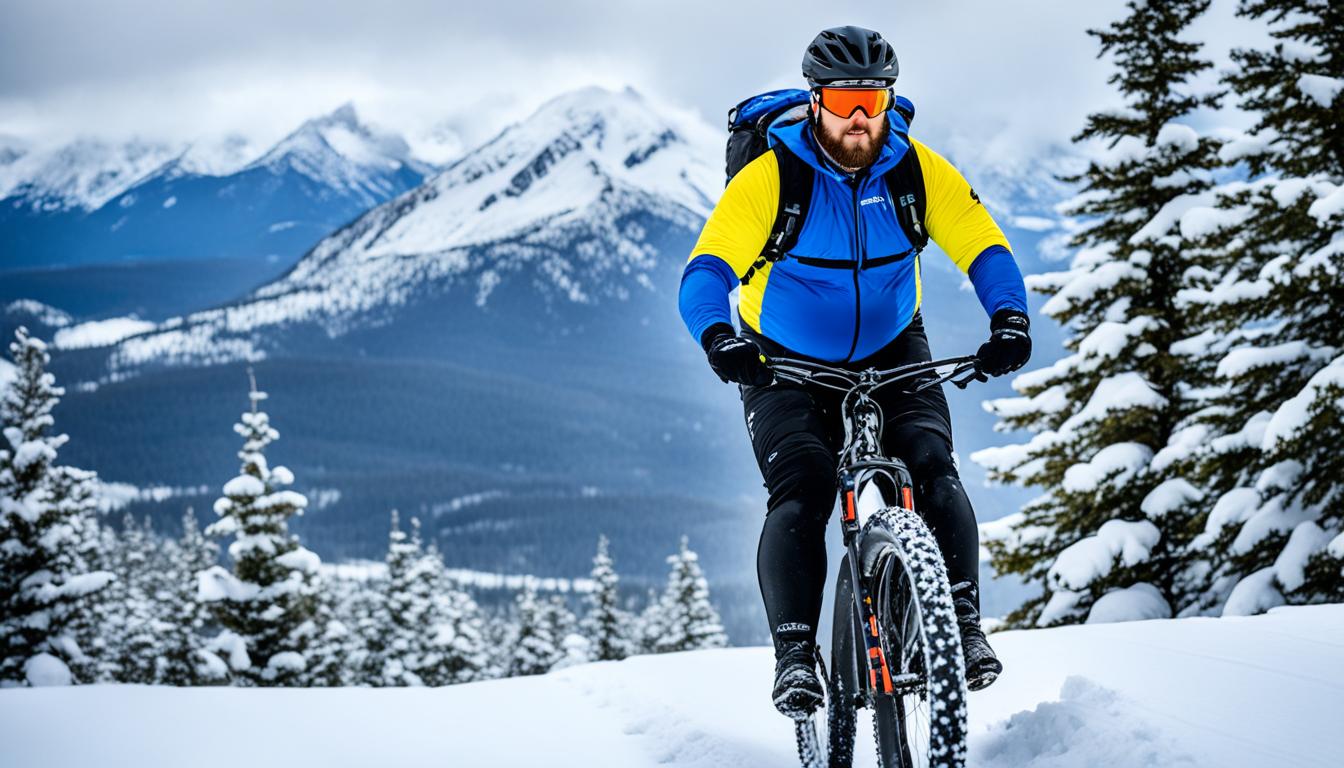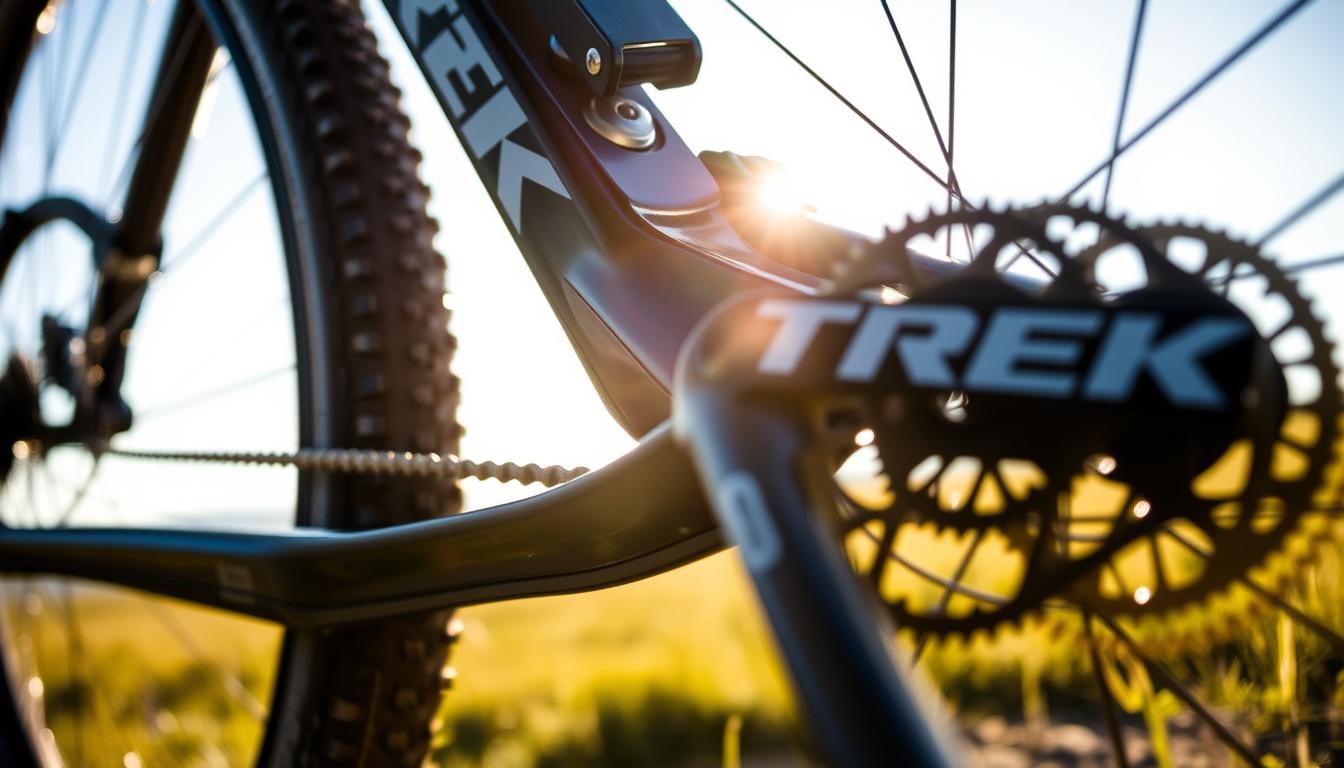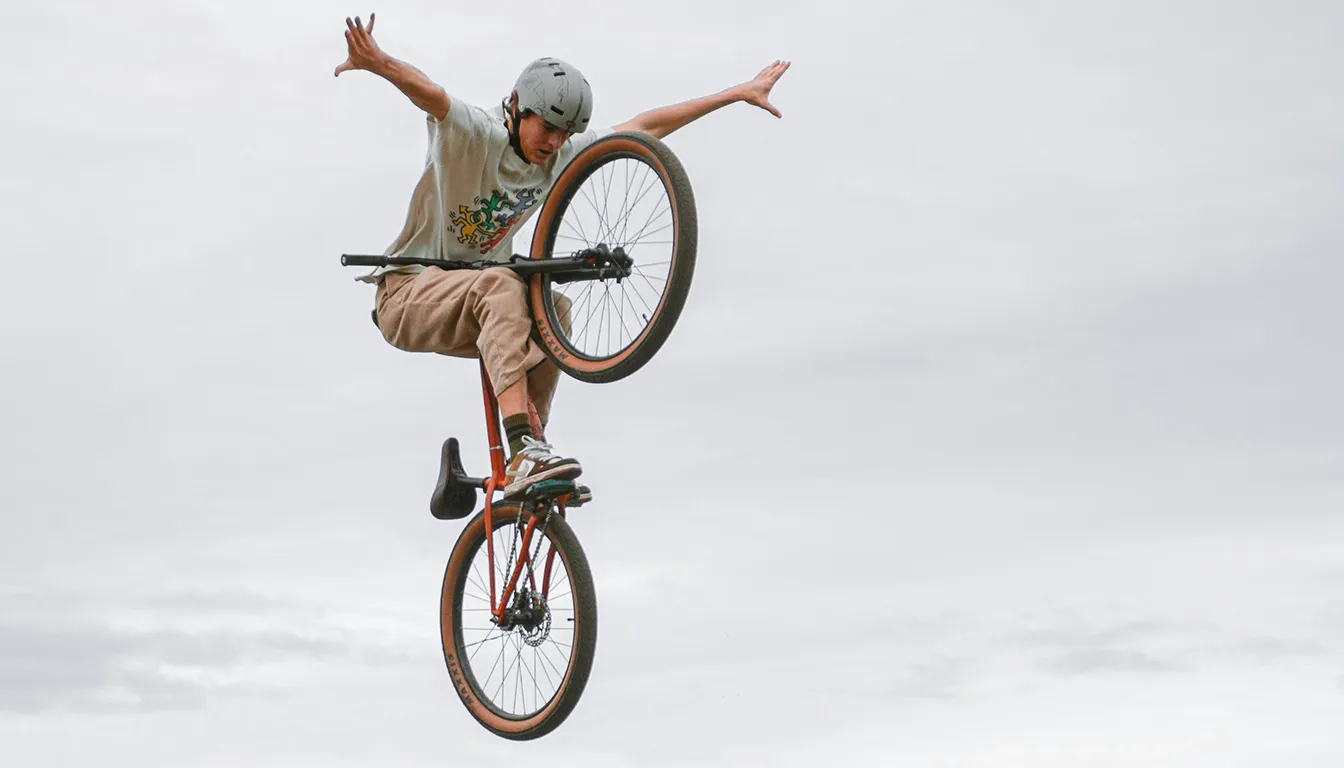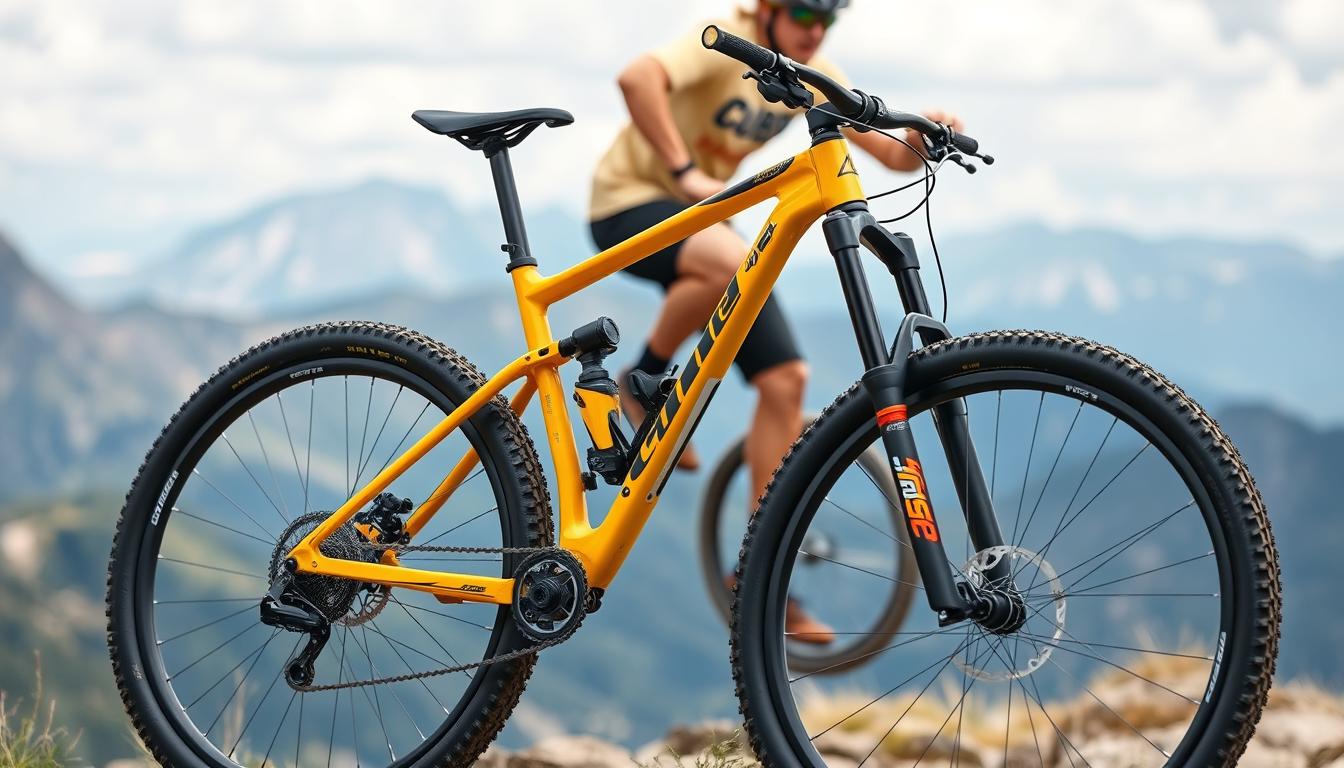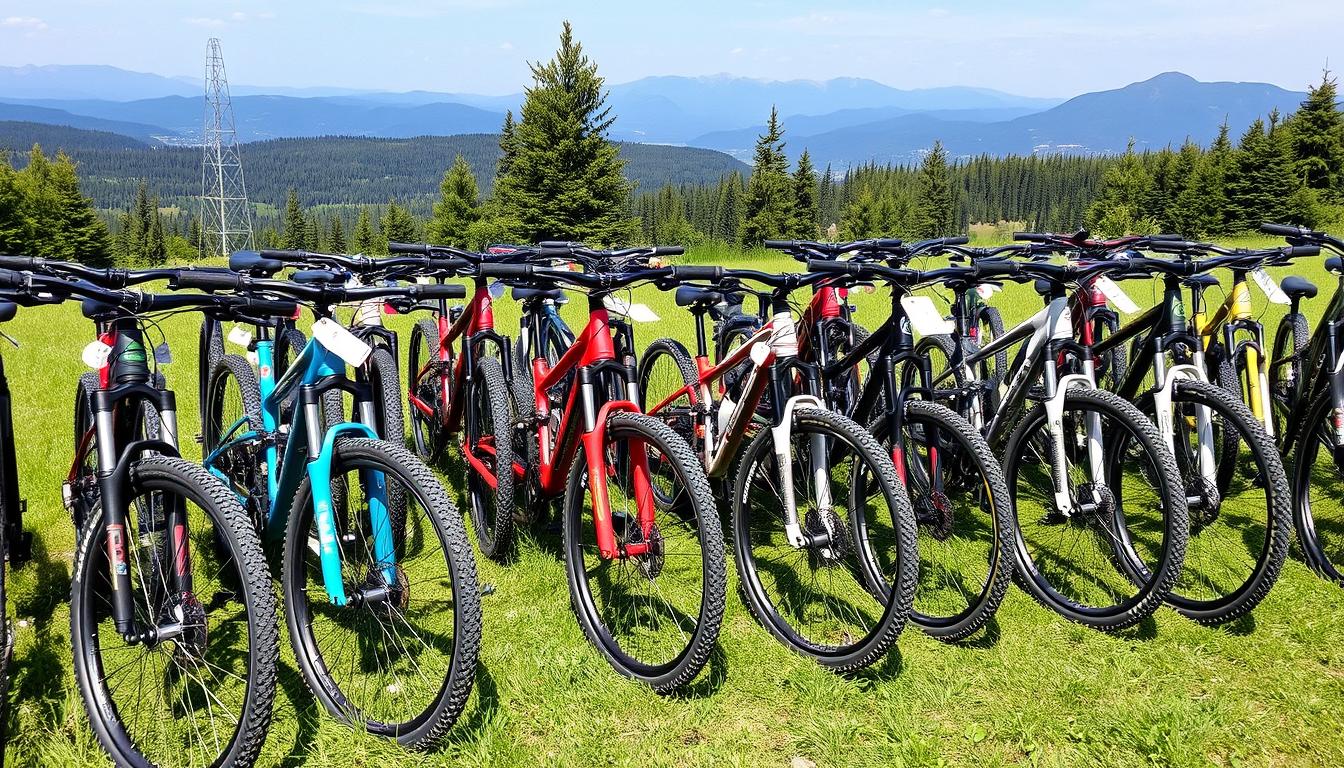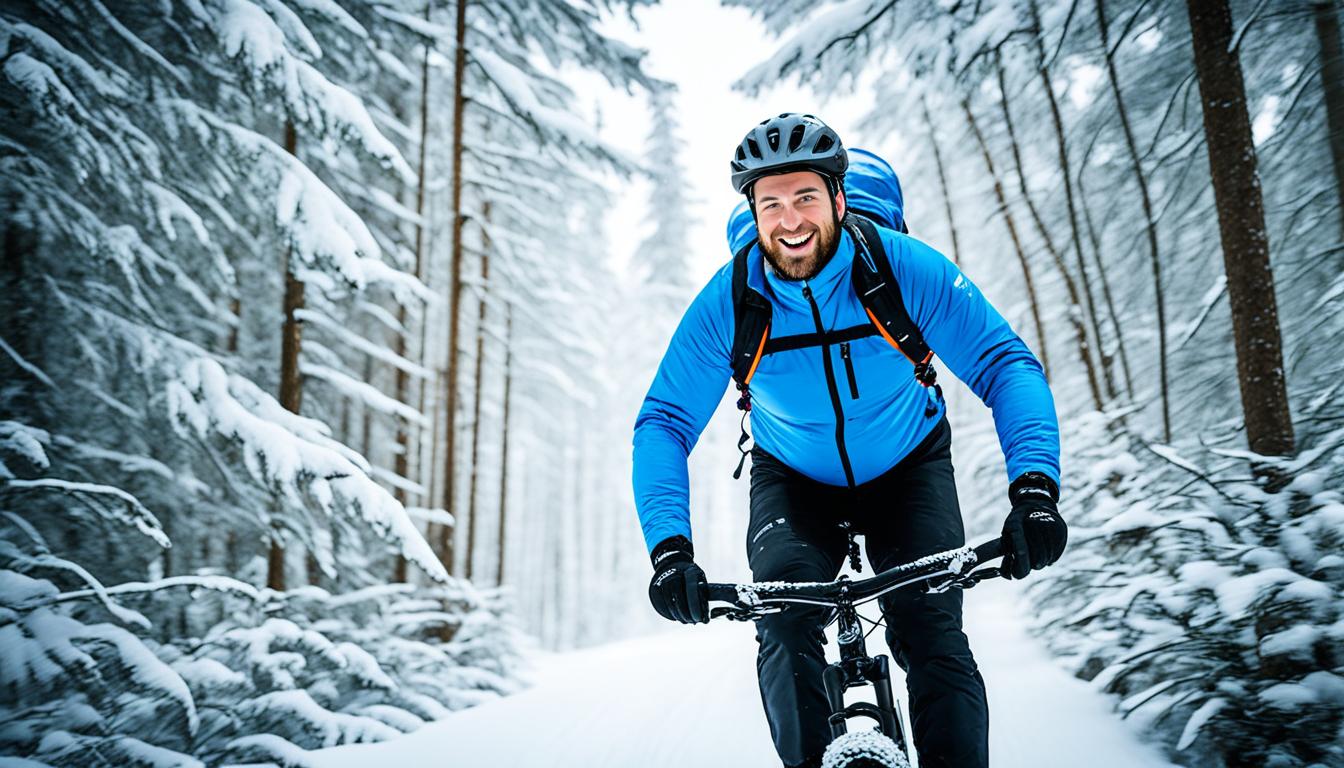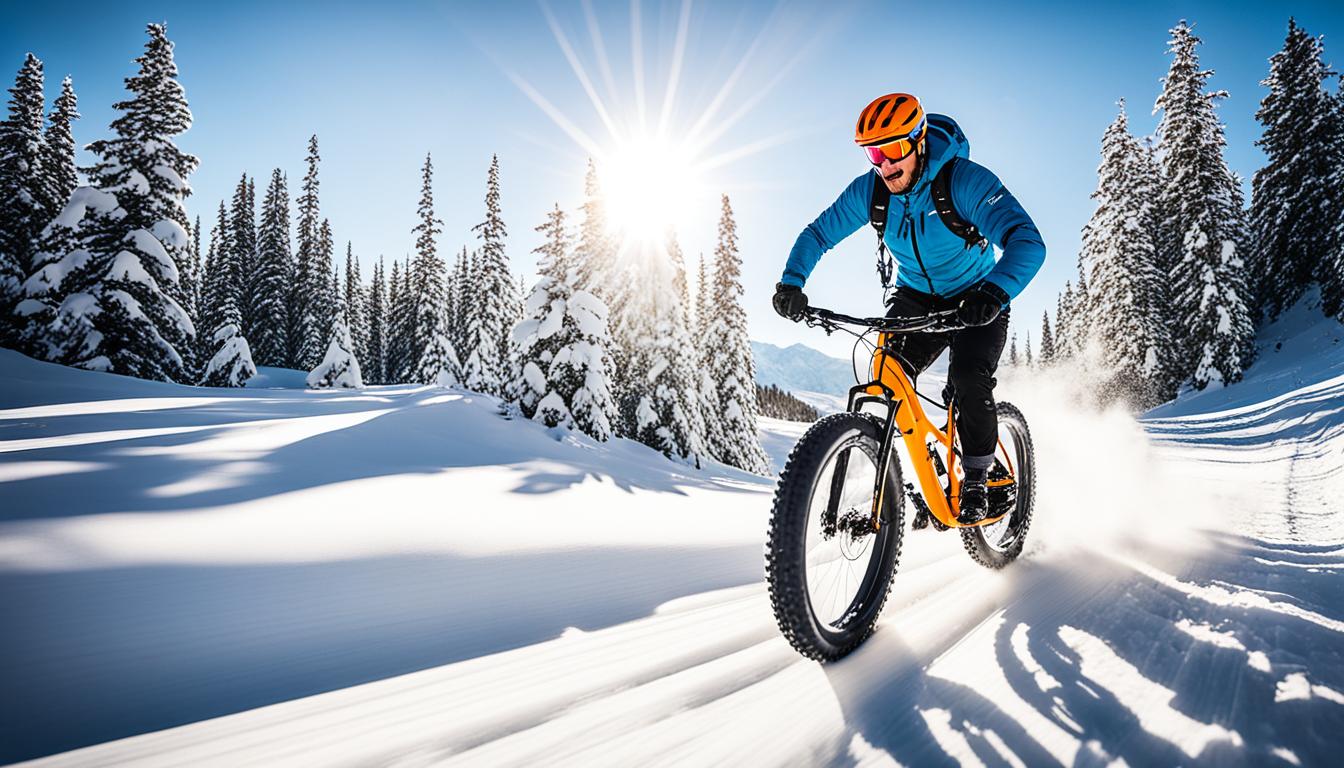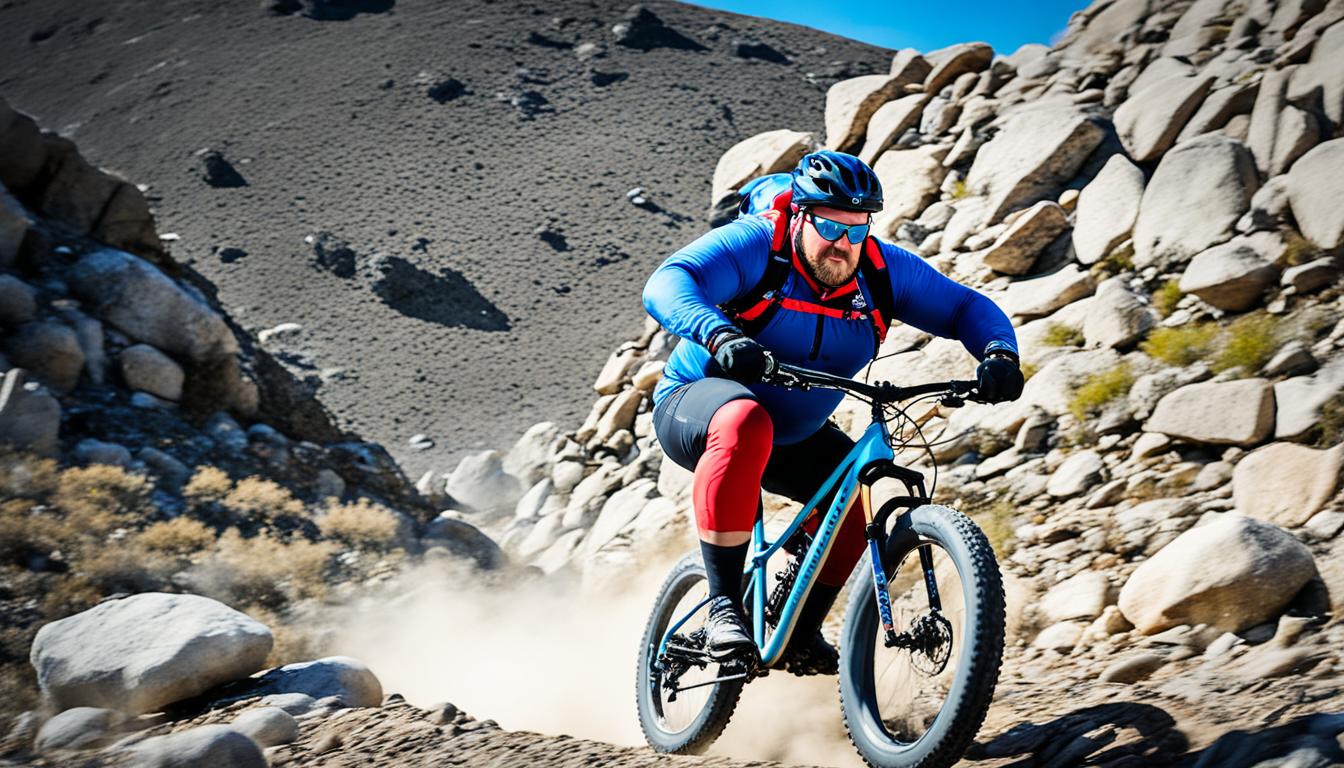Fat biking is becoming more popular, especially for newcomers in 2024. They have wide tires that range from 4 to 5 inches to handle different types of terrain like snow and sand. This quality makes them great for beginners wanting to try off-road biking.
There’s a growing range of fat bikes that suit various tastes and budgets. Choices like the Kona Woo and the State 6061 Trail+ offer new riders comfort and stability. We will look at what makes fat bikes special and suggest the best ones for newcomers in 2024.
Understanding Fat Bikes
Fat bikes have become very popular, especially with people who love outdoor adventures across different kinds of terrain. These bikes have very wide tires, from 3.8 to 5 inches, which makes it easier to ride on soft surfaces like snow and sand. To really enjoy what fat bikes offer, it’s key to understand how they are different and their benefits.
What Makes a Fat Bike Different?
What sets a fat bike apart is its design and what it can do. The wide tires give better grip, perfect for challenging outdoor conditions. They let you ride at low pressure, which means even rough ground feels smoother under the wheels. The bikes also have strong frames and are built to keep you stable, so you can have a comfortable ride wherever you go.
Key Features of Fat Bikes
Fat bikes have some special features that make them stand out. These include:
- Oversized tyres that offer superior grip.
- Heavy-duty frames designed for durability.
- Compatibility with various accessories, enabling customisation for specific needs.
- A range of gearing options to assist in navigating diverse landscapes.
Nowadays, new models are even made with lighter materials like carbon fibre. This means they perform well without being too heavy. With these improvements, fat bikes are perfect for adventurers looking to go off the usual paths.
Benefits of Riding Fat Bikes
Fat bikes give a unique and fun cycling experience. They have benefits that make them different from normal bikes. Their special design lets riders try out different terrains with comfort and stability.
All-Terrain Capability
Fat bikes are known for their all-terrain capability. They have wide tires, about four to five inches wide. This helps with better grip and stability. Riders can easily go over snow, sand, and gravel. This makes fat bikes great for those who love to try new and tough terrains. They can smoothly get over things like roots and stones. This makes the ride exciting on various kinds of landscapes. For more on fat biking benefits, check out this article. These bikes aren’t just for winter but for all kinds of terrains.
Comfort and Stability
The wide tires on fat bikes act like a shock absorber. This greatly improves comfort for the rider. It’s very helpful for beginners. It gives them more confidence when they’re riding through unpredictable terrains. Riders have better control, making their journey more fun. The comfort from fat bikes makes long rides easier. This lets cycling fans really enjoy their time outside.
Year-Round Riding
Fat bikes are great for cycling any time of the year. They work well in winter conditions, perfect for snowy trails. Their strong design also suits summer rides on sandy beaches. They’re becoming more popular on regular trails too. With these bikes, people who love cycling can do it no matter the season. This brings a new excitement to outdoor adventures.
Factors to Consider When Choosing a Fat Bike
Choosing the right fat bike means looking at key features that affect how it rides. You need to know these aspects to pick a fat bike that suits your needs and likes.
Frame Material and Size
Fat bike frames come in aluminium, carbon fibre, and steel. Aluminium is light yet strong, carbon fibre is very stiff but costly, and steel is durable with a comfortable ride. You should find a frame size that feels good and easy to control. Riding a well-fitting bike makes it more fun and improves control.
Tire Width and Wheel Size
Fat bikes are known for handling different tire widths, from 3.7 to over 5 inches. Thicker tires work better on soft ground like snow or sand. They mostly have 26-inch or 27.5-inch wheels that impact how they perform and feel. Knowing these details helps you choose a bike that meets your needs on various terrains.
Suspension Types
Fat bikes often have rigid or front suspension setups, rather than full-suspension. Front suspensions smooth out bumpy rides without making the bike too heavy. This choice affects how comfortable your ride is and what terrain you can handle. For more tips on picking a fat bike, visit this resource.
What Are the Best Fat Bikes for Beginners?
Starting your journey into fat biking? Choosing the right bike can make a huge difference. Here are some of the top fat bikes for beginners.
Trek Farley 7 – Overview and Features
The Trek Farley 7 is a top choice with an overall score of 84. It shines in different terrains with a 9.0 rating for downhill and a 9.0 for versatility. The bike’s suspension fork and dropper post ensure top-notch performance.
Fezzari Kings Peak Comp – Overview and Features
The Fezzari Kings Peak Comp scores an 81 overall. It has a lightweight carbon frame perfect for aggressive trail rides. With an 8.0 for both downhill and uphill performance, it’s versatile with a 9.0 score. It’s a great choice for new riders.
Canyon Dude CF 7 – Overview and Features
The Canyon Dude CF 7 has a balanced score of 78. It ranks 7.0 for downhill and 9.0 for uphill, making it easy to climb and handle descents. It scores 7.0 for versatility, fitting for various conditions.
Giant Yukon 1 – Overview and Features
The Giant Yukon 1 scores 80, blending performance with value. It rates 8.0 for both downhill and uphill, and 8.0 for versatility. This model is great for snowy conditions, ideal for winter adventures.
Salsa Heyday Advent – Overview and Features
The Salsa Heyday Advent is a solid entry-level option with a score of 71. It’s better uphill and versatile, scoring 8.0. With quality components, it ensures enjoyable rides for beginners.
Comparing the Best Fat Bikes for Beginners
Starting with fat biking on a budget requires exploring several options. This comparison looks into price, performance, weight, build quality, and how the bike performs on different terrains. These points help beginners make a wise choice.
Price vs Performance Analysis
The Kona Fire Mountain costs £750, while the Framed Minnesota 1.2 is £849. This shows how different prices offer varied benefits in terms of performance. For newcomers, it’s valuable to know how spending more or less affects the bike’s features and ride feel.
Comparing these can help understand the relationship between cost and factors like suspension and materials. This knowledge is key in choosing a bike that meets both budget and performance needs.
Weight and Build Quality Comparison
Weight affects a fat bike’s experience significantly. Lighter bikes, around 25 lbs, are easier to handle. On the other hand, a heavier bike, like the 32.1 lbs Framed Minnesota, steadies your ride on rough terrains. Materials such as carbon add to the bike’s lightness and responsiveness.
When picking their first fat bike, beginners should think about these aspects. Understanding the impact of weight and materials on biking is crucial for a good start.
Usability in Different Terrains
Fat bikes are great for many environments, like snowy paths or sandy shores. Their wide tires, over 3.8 inches, work well at low pressures for better grip. This makes controlling the bike easier in tricky areas.
Different terrain needs, like snow biking, can require smaller chainrings, such as 28T. This is in contrast to mountain bikes that often use 32T or 34T. For new cyclists, knowing these details helps pick the right bike for their adventures.
User Experiences and Reviews
Looking into fat bike reviews offers great insights. Beginners share their thoughts on starting their fat biking adventures. They love the stability and how easy the bikes are to use across different landscapes. Riders are amazed by the way these bikes manage tough conditions like sand, snow, or mud. This boosts their confidence when facing various obstacles.
Feedback from New Riders
New riders are happy with how comfortable fat bikes are. This comfort makes riding more enjoyable and gives better control. Riders value several things:
- Enhanced grip on rough terrains.
- The smooth ride from the wide tyres, which are 4 to 5 inches thick.
- The choice between 27.5-inch and 29-inch wheels, making the bike easier to handle.
- The fact that these bikes are easy and cheap to maintain.
Expert Testimonial Highlights
Experts agree with new riders about the benefits of fat bikes. They highlight features helpful for beginners, such as:
- Hydraulic or mechanical disc brakes for strong stopping power in any weather.
- Frames made of light materials like aluminium and carbon to lessen tiredness on long rides.
- The ability to customise the bike for a more comfortable and effective ride.
These expert views support the idea that fat bikes are great for newcomers. They suggest that fat bikes are a top choice for those eager to explore off-road biking.
Maintenance Tips for Fat Bikes
To keep your fat bike running smoothly, regular care is needed. Knowing the best ways to look after your fat bike ensures it performs well all year. Here are vital maintenance tips to enhance your biking experience.
Keeping Your Tires in Top Shape
Looking after your tires is key for a well-maintained fat bike. Always check your tire pressure; low pressure can slow you down and cause punctures. Check the tires for signs of wear and consider replacing them if needed. Using tubeless tires in winter helps avoid flats on rough terrain.
Regular Checks and Adjustments
Make sure to regularly inspect your brakes, gears, and drivetrain. Doing so boosts safety and prolongs your bike’s life. A clean chain works better and reduces wear. These regular checks keep your bike in top condition for any journey.
When to Seek Professional Servicing
At times, bike maintenance might be beyond your skills. Knowing when to get professional help is crucial to avoid bigger problems. If you’re hearing odd sounds or notice a drop in performance, see a skilled bike mechanic. They ensure your fat bike stays in great shape for longer.
Conclusion
Fat biking opens up a whole new world for beginners eager to ride across different landscapes. By 2024, the top starter fat bikes shine with their tough build and versatility. Ready to take on snow, sand, or gravel, they promise great outdoor fun.
When picking a fat bike, riders look at the frame, tire size, and how well it shifts gears. Bikes like the Trek Farley 7 and the Salsa Heyday Advent stand out. They have special traits that suit various preferences, meaning there’s a bike for every rider.
It’s wise to research and try out bikes before buying one. A whooping 94% of bike lovers suggest test rides to discover the perfect match. Trying different bikes lets you fully appreciate fat biking and the beauty of nature around you.
FAQ
What size tires do fat bikes typically have?
Fat bikes come with big tires, between 4 to 5 inches wide. They offer great stability and grip on tough terrains like snow and sand.
Are fat bikes suitable for beginners?
Yes! Fat bikes are made to be easy to handle and stable. They are perfect for new riders who want to try off-road biking.
What terrains can I ride a fat bike on?
You can ride a fat bike on many surfaces. This includes snow, sand, and rough trails. They’re good for riding all year round.
How should I maintain my fat bike?
Maintaining your fat bike is key for a good ride. Check the tyre pressure and look for wear regularly. Also, make sure the brakes and drivetrain are in good shape.
What should I consider when choosing a fat bike?
When picking a fat bike, think about the frame material and tyre width. Also, consider the wheel size and suspension type. These affect how the bike handles and feels.
Can I ride a fat bike in the winter?
Yes, fat bikes are great for winter. They let you bike on snow. This means you don’t lose control or performance.
What are some recommended brands for beginner fat bikes?
For beginners, brands like Trek, Fezzari, Canyon, Giant, and Salsa are good. They have bikes suited for new riders.
How do the prices of fat bikes vary?
Fat bike prices differ a lot. They depend on the build and materials. Make sure you choose one that’s good value for your money.
What is the advantage of a carbon frame in a fat bike?
Carbon frames are lighter than aluminium. This makes the bike perform better. It’s still strong and reliable, good for riders who like challenges.
